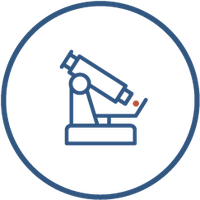Published: 06 April 2014
The sharing of corporate compound collections was until recently very challenging.
However last year’s successful creation of the European Lead Factory (ELF), and now an announcement from Astellas Pharma and Daiichi Sankyo, have demonstrated a workable model.
Combining corporate compound collections offers enhanced access to novel, high quality chemistry.
This is possible because the historical assembly of collections have been linked to different therapeutic foci, and so the chance of finding multiple diverse hit scaffolds is increased.
Announced last month, Astellas and Daiichi Sankyo, two of the largest Japanese pharma companies, have agreed to share around 400,000 compounds from their proprietary collections. Rights to develop and commercialise hits for any human disease will be granted to the target owner.
The press release highlights the advantages of this type of collaboration:
Both companies can access increased collection diversity from pharma quality compounds
Accelerate open innovation while taking advantage of the strengths of each company to provide innovative new drugs
A pattern is now emerging for a workable model similar to that of the ELF.
 The IMI funded European Lead Factory (ELF), now into its second year, is a unique public-private partnership set to enhance drug discovery via open innovation, with the Joint European Compound Collection (JECC) at its core. Around 300,000 high quality ‘drug-like’ and synthetically tractable compounds are being shared and screened by the seven pharmaceutical company members of the ELF.
The IMI funded European Lead Factory (ELF), now into its second year, is a unique public-private partnership set to enhance drug discovery via open innovation, with the Joint European Compound Collection (JECC) at its core. Around 300,000 high quality ‘drug-like’ and synthetically tractable compounds are being shared and screened by the seven pharmaceutical company members of the ELF.
For the ELF, creating a clear framework for compound ownership, and using a neutral compound management center such as BioAscent, to overcome difficulties that may be encountered in operations, has allowed the sharing of compound collections to become a reality, letting collections be fully exploited in the search for promising drug candidates.
How were the perceived risks overcome?
Sharing compound collections to provide increased chemical novelty is certainly attractive, but until the creation of the ELF, the issues of retaining confidential structural information and of ownership of any hit compounds had not been successfully resolved. Those issues were:
Restricting compound structural information
The ELF model provides a structure that allows the secure sharing of compound collections, using a trusted central management and logistics hub. The collection is shared between the partners without any disclosure of compound structures. The compound management IT systems allow the compounds to be handled and shared without risking the leakage of commercially sensitive information.
Ownership of confirmed hits
The ELF model also provides a solution to the question of who owns the resulting hit compounds. The compound collections are shared with the agreement that the biological target owner, the organisation actually performing the screen and identifying the hit, would own the right to develop the compound.
Compound collection overlap: is there real diversity to be found by combining collections?
In a recent Drug Discovery Today, the compound collections of Bayer and Schering were compared for overlap following the merger of the two companies. Only around 1.5% duplicated structures were found between over 2 million from Bayer, and around 900,000 from Schering, most being the result of combi-chem or synthetic intermediates. There was virtually no overlap of the med-chem selected compounds from each collection.
Thus successful compound collection sharing has been achieved and we expect to see further examples soon.




